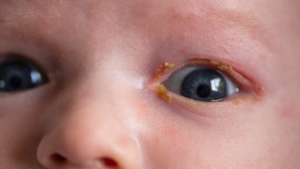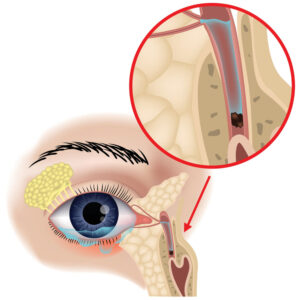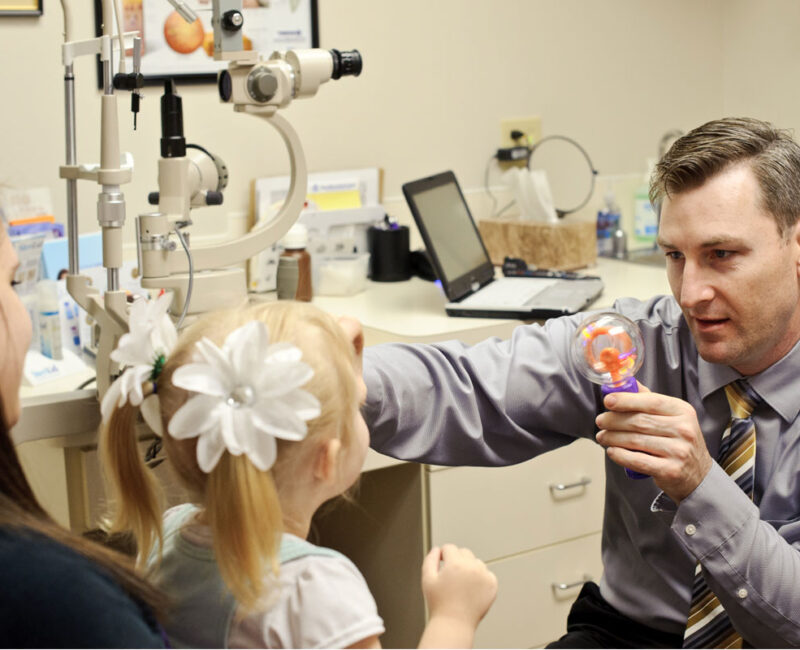In children less than 12 months old, a probing can be done safely in the office. The child is wrapped in a papoose board (similar to being wrapped in a receiving blanket). An eyedrop to numb the eye is instilled, and a probe is gently pushed through the duct, overcoming any obstructions. The probing happens quickly, about as fast as an immunization shot. If a child is over 12 months, this procedure is performed under anesthesia in a surgical facility.
If a probing is unsuccessful at restoring flow through the duct(s), a tube can be placed in the tear duct to hold the system open. This is done under anesthesia. The tube is left in place for 6-8 weeks, and then removed easily in the office.









